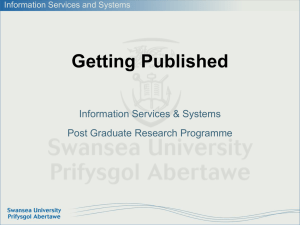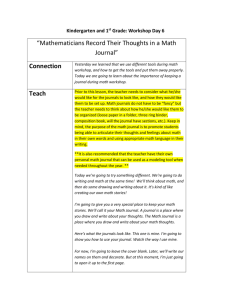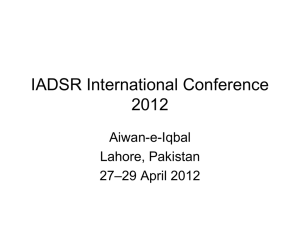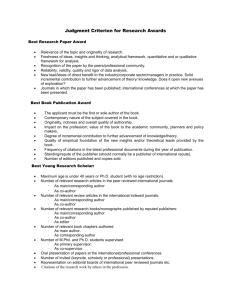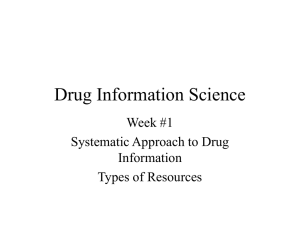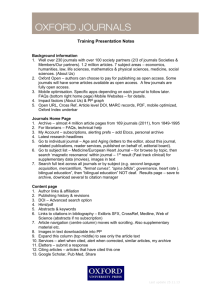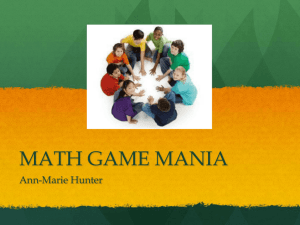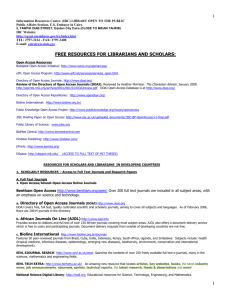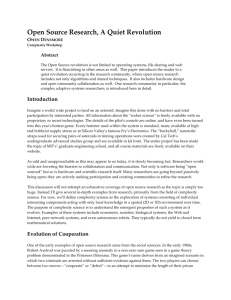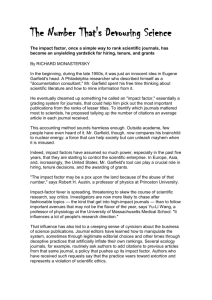Daniel C. Fehder, Fiona Murray and Scott Stern
advertisement
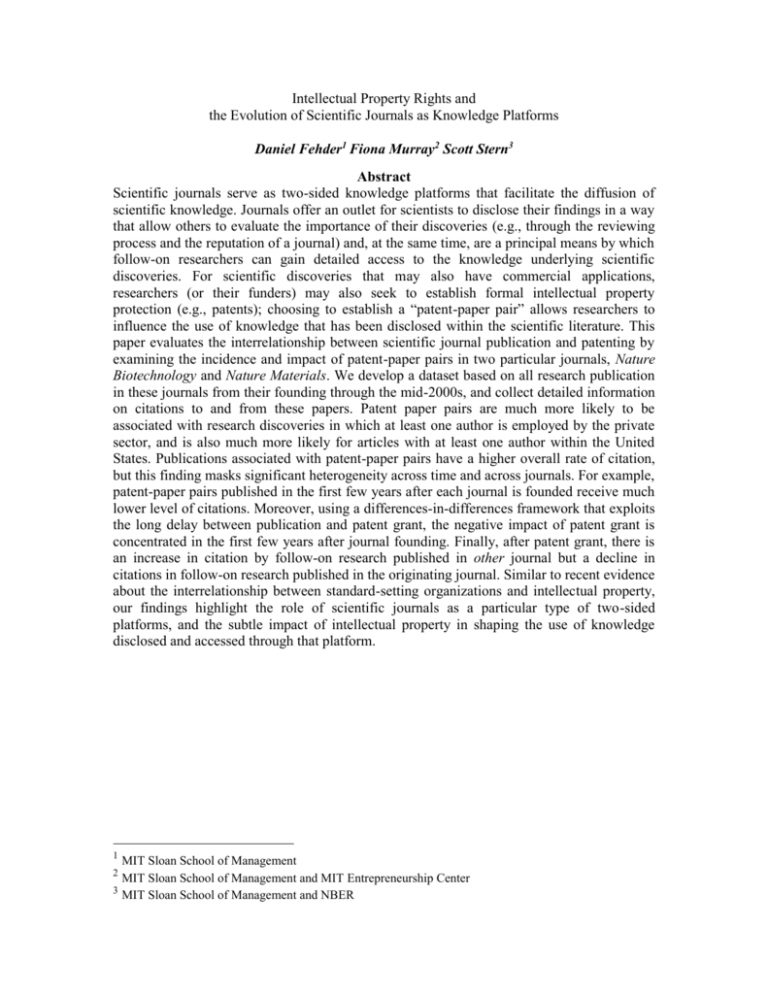
Intellectual Property Rights and the Evolution of Scientific Journals as Knowledge Platforms Daniel Fehder1 Fiona Murray2 Scott Stern3 Abstract Scientific journals serve as two-sided knowledge platforms that facilitate the diffusion of scientific knowledge. Journals offer an outlet for scientists to disclose their findings in a way that allow others to evaluate the importance of their discoveries (e.g., through the reviewing process and the reputation of a journal) and, at the same time, are a principal means by which follow-on researchers can gain detailed access to the knowledge underlying scientific discoveries. For scientific discoveries that may also have commercial applications, researchers (or their funders) may also seek to establish formal intellectual property protection (e.g., patents); choosing to establish a “patent-paper pair” allows researchers to influence the use of knowledge that has been disclosed within the scientific literature. This paper evaluates the interrelationship between scientific journal publication and patenting by examining the incidence and impact of patent-paper pairs in two particular journals, Nature Biotechnology and Nature Materials. We develop a dataset based on all research publication in these journals from their founding through the mid-2000s, and collect detailed information on citations to and from these papers. Patent paper pairs are much more likely to be associated with research discoveries in which at least one author is employed by the private sector, and is also much more likely for articles with at least one author within the United States. Publications associated with patent-paper pairs have a higher overall rate of citation, but this finding masks significant heterogeneity across time and across journals. For example, patent-paper pairs published in the first few years after each journal is founded receive much lower level of citations. Moreover, using a differences-in-differences framework that exploits the long delay between publication and patent grant, the negative impact of patent grant is concentrated in the first few years after journal founding. Finally, after patent grant, there is an increase in citation by follow-on research published in other journal but a decline in citations in follow-on research published in the originating journal. Similar to recent evidence about the interrelationship between standard-setting organizations and intellectual property, our findings highlight the role of scientific journals as a particular type of two-sided platforms, and the subtle impact of intellectual property in shaping the use of knowledge disclosed and accessed through that platform. 1 MIT Sloan School of Management MIT Sloan School of Management and MIT Entrepreneurship Center 3 MIT Sloan School of Management and NBER 2
